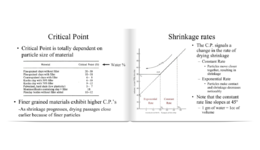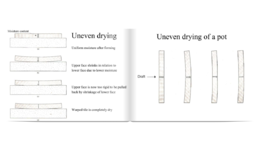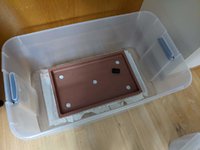andrewiles
Chumono
I've been watching the awesome videos from Washington Street Studios on YouTube.
One of these discusses the orientation of particles within clay and how this impacts shrinkage when drying:
At around 19:30 he describes how joining pieces of different orientations can cause problems.
I've been handbuilding some slab pots and I'm now trying an extruder. This seems to be a problem. If the z-direction is out of the table, the rolled slab will have clay particles oriented in the xy plane while the extruded walls will be oriented in the xz or yz plane. In either case the walls will tend to shorten in the xy plane more than the bottom slab.
Anyone have thoughts on this? I know @ABCarve was using an extruder in some of this work and I see @penumbra is looking to buy one. I'm starting to dry my first pot with extruded walls now.
One of these discusses the orientation of particles within clay and how this impacts shrinkage when drying:
At around 19:30 he describes how joining pieces of different orientations can cause problems.
I've been handbuilding some slab pots and I'm now trying an extruder. This seems to be a problem. If the z-direction is out of the table, the rolled slab will have clay particles oriented in the xy plane while the extruded walls will be oriented in the xz or yz plane. In either case the walls will tend to shorten in the xy plane more than the bottom slab.
Anyone have thoughts on this? I know @ABCarve was using an extruder in some of this work and I see @penumbra is looking to buy one. I'm starting to dry my first pot with extruded walls now.




